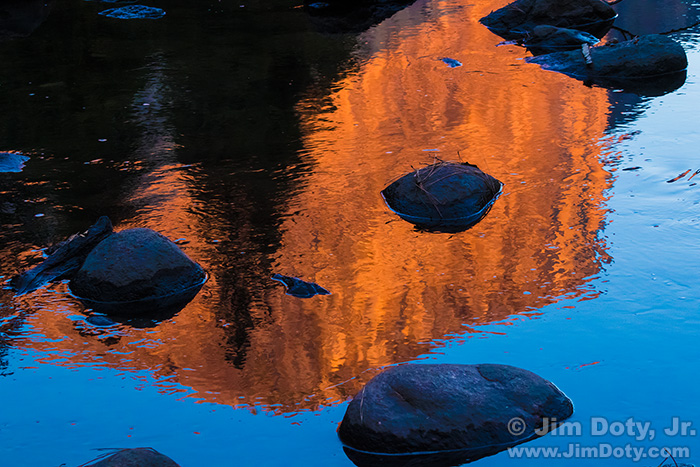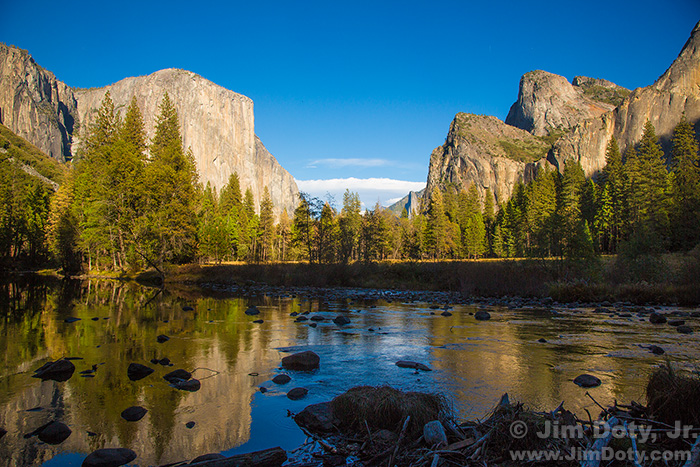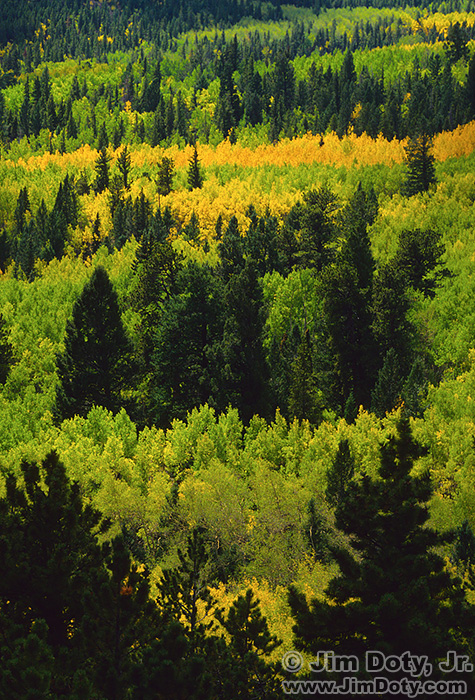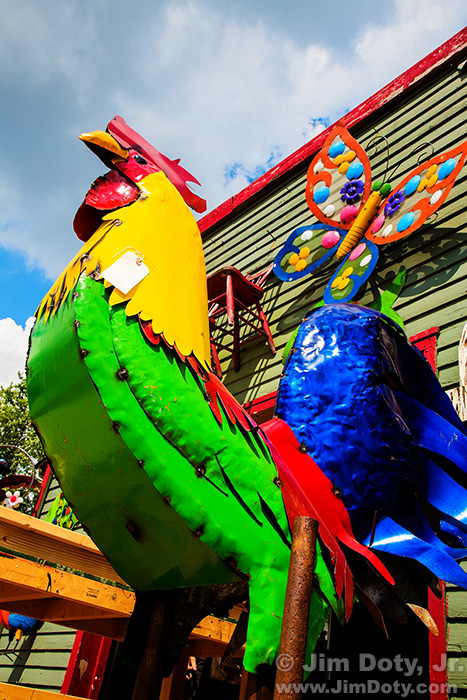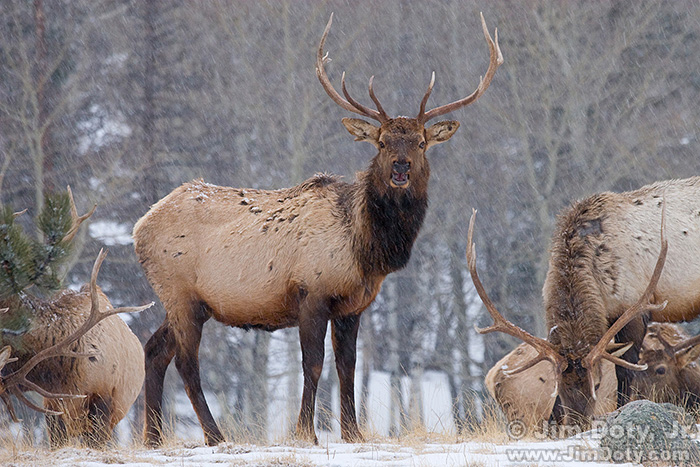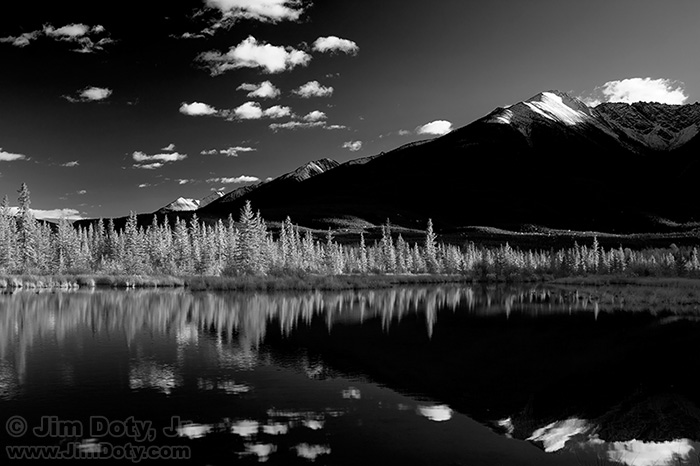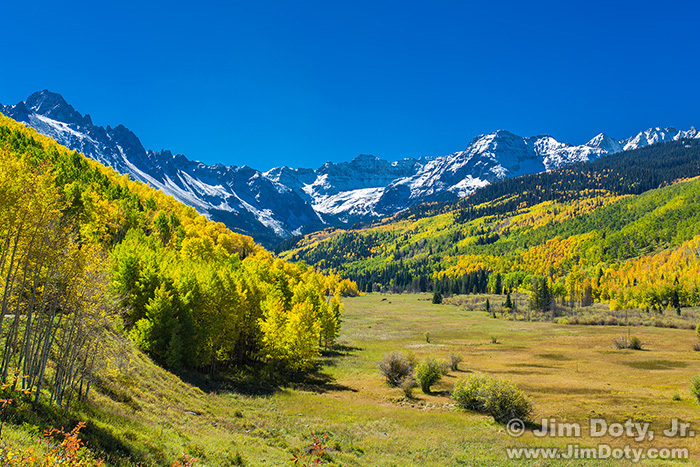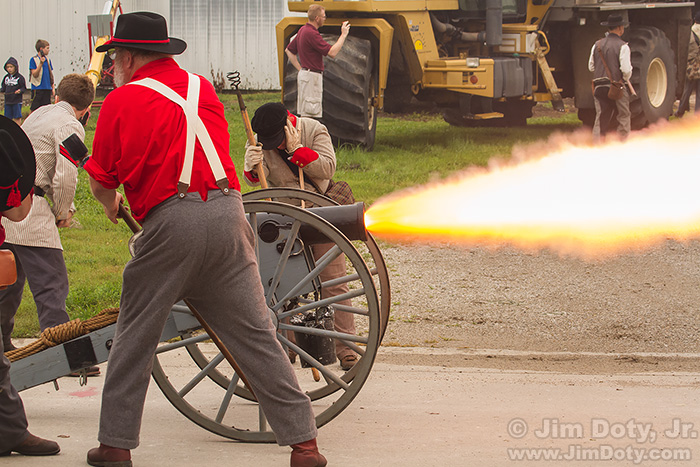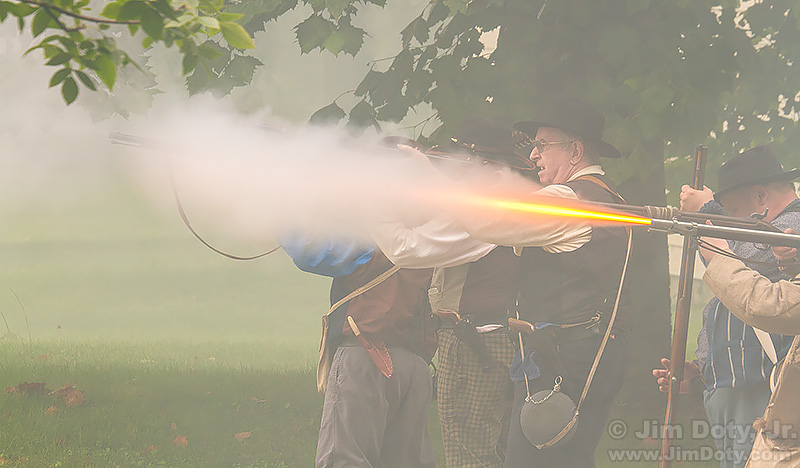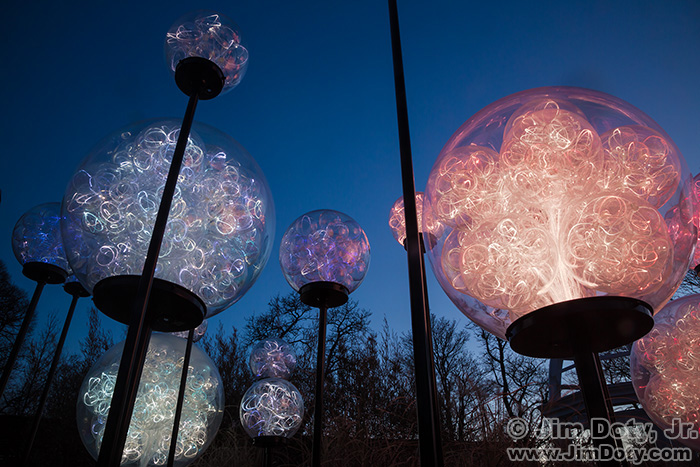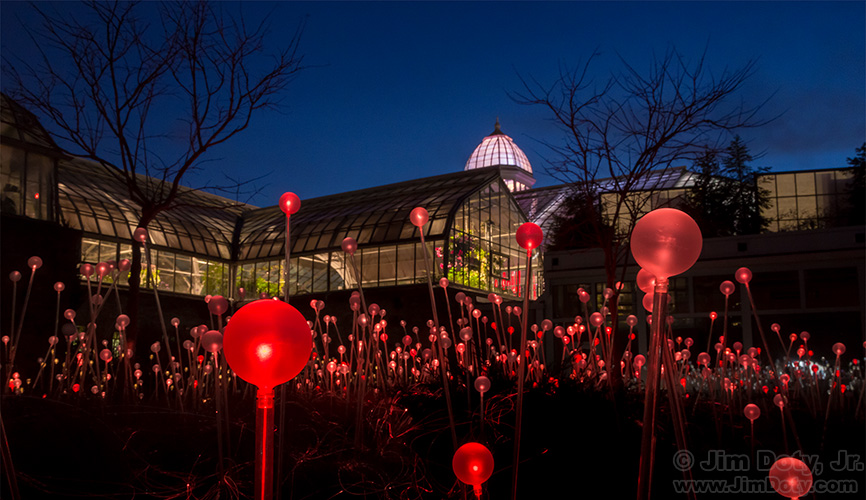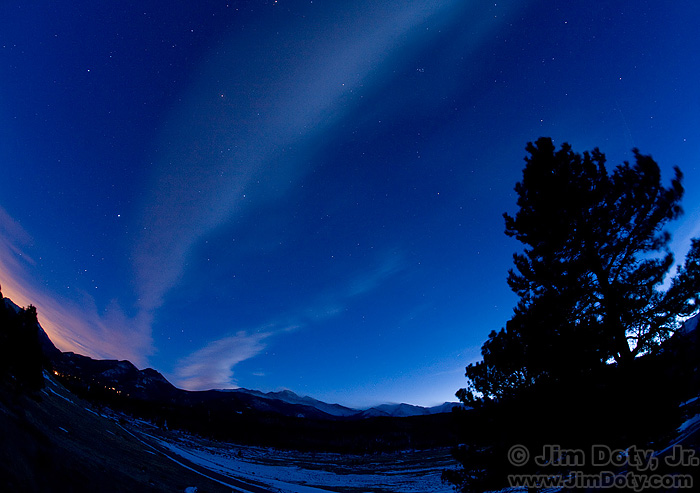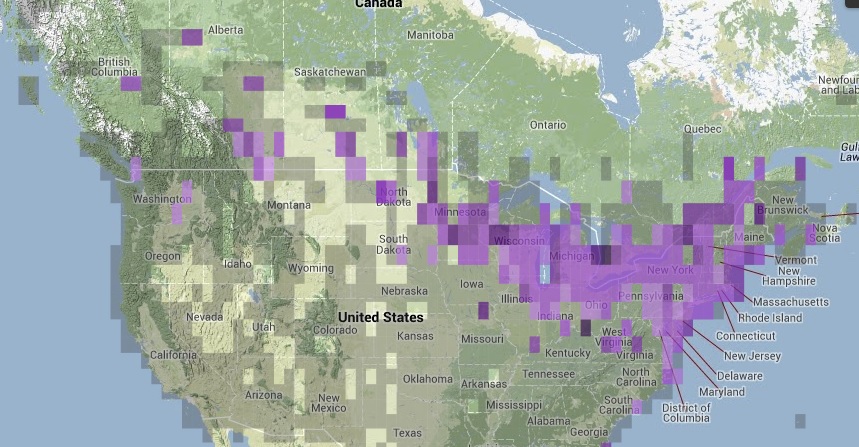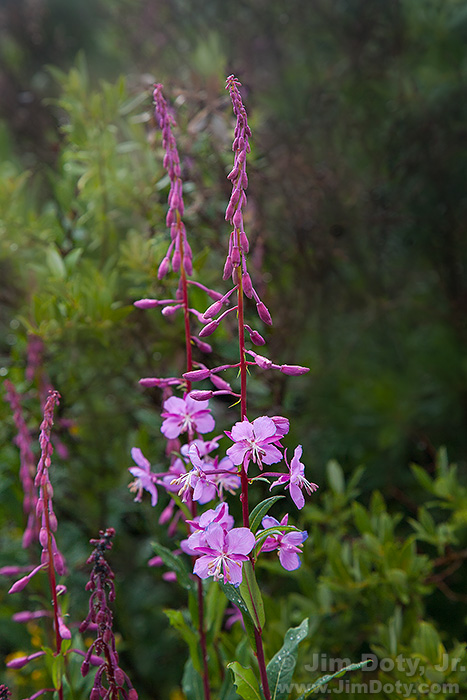Cold and snow can cause a lot of damage to your camera gear. The simple steps in this article could save you hundreds of dollars in repair bills.
Category Archives: Photo Locations
POTD: Stars Trails Over El Capitan
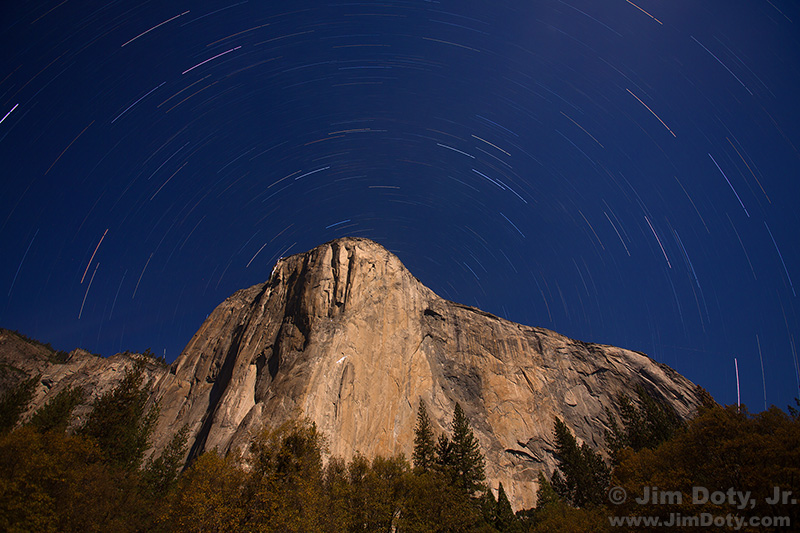
Stars over El Capitan with climbers on the granite cliffs. Yosemite Valley. This is a stacked image combing 8 separate exposures. Click to see a larger version.
El Capitan is a splendid sight in Yosemite Valley. Small wonder that for decades photographers have been showing up in droves to photographic the iconic granite cliffs. It is the largest block of exposed granite on our planet.
Panorama: Yosemite Valley in the Moonlight
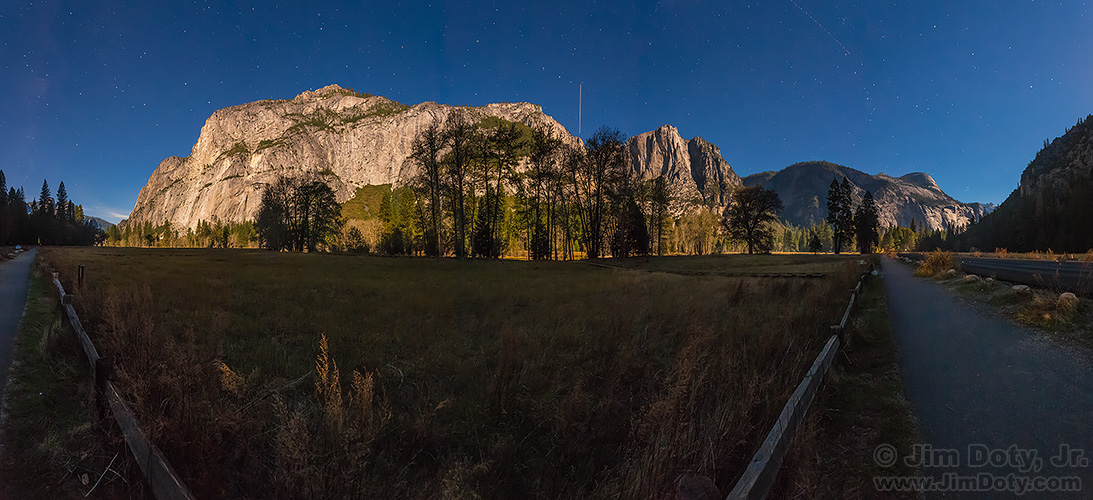
Yosemite Valley at Night with Eagle Peak, Yosemite Point, and North Dome. The vertical light near the center is one of two planes that ended up in this image. Click to see a larger version.
Night photography has its own unique charms, whether it is a dark night with no moon and thousands of crystal clear stars, or with plenty of moonlight which (if you choose) you can turn night into day. And it isn’t all that complicated to do. With the addition of the right gear, you can turn your night time vista into a panoramic photo.
POTD: El Capitan Reflection
With one camera on a tripod taking a series of aligned images of Gates of the Valley (see my last article) in the changing light, I was using my other camera with a longer lens to capture different areas of the overall scene.
How to Photograph “Gates of the Valley”
Jay’s Rock – Finding the Prime Location

First sunlight on the Maroon Bells at Maroon Lake. Jay on his rock, Jay’s wife, me, and other photographers. Photo © Bob Walker.
In photography, as in real estate, sometimes it is all about “location, location, location”. As the old photographic saying goes: “f/8 and be there.” In the fall that is especially true of mornings at the Maroon Bells. Arrive too late and you will get a less than prime spot and you will have other photographers in your photo instead of a pristine view of just the peaks and Maroon Lake.
POTD: The Maroon Bells by Moonlight
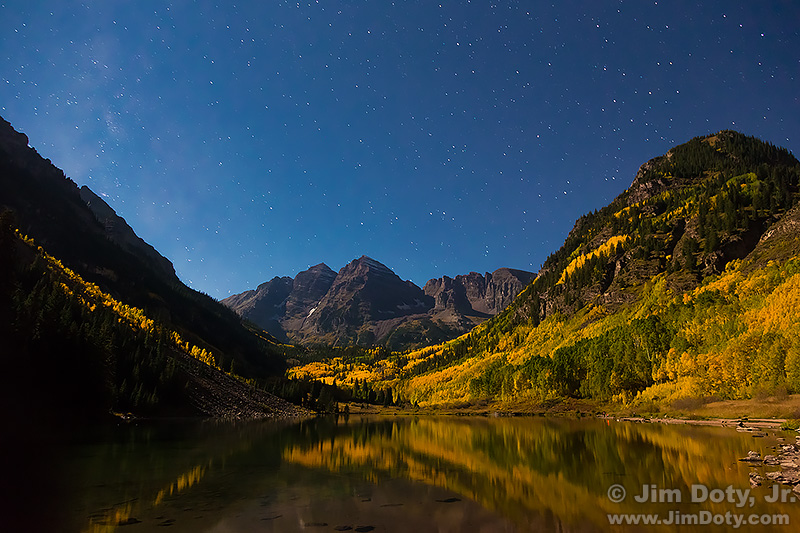
The Maroon Bells and Maroon Lake by Moonlight with the Milky Way. Colorado. Click to see a larger version.
The Maroon Bells deserve their reputation as one of the best photo locations in the state of Colorado, especially in the fall. They look just as spectacular by moonlight. It is an added bonus if you get a hint of the Milky Way in the frame (left side of the image). It won’t be as sharp and defined as on a dark night without the moon, but it will be there.
Colorado Fall Color Travel Guide
This article is updated and re-posted every year. To find the most recent version, go to the Favorites/Most Popular page and look for the name of this article.
Welcome to my first Colorado fall color travel guide with 100 photos and 17 maps. I cover some of the best known fall color locations in Colorado, and one real gem of a road that is mostly unknown to photographers and leaf peepers. Spend anywhere from two days to two weeks exploring the beautiful Colorado Rockies at a gorgeous time of year.
Finding the Peak Fall Color at the Best Locations
The update of this article is here.
Fall color is sweeping the country. To make the most of it, you want to be at the right place at the right time. With some help from the internet, I will help you find the best fall color locations at the peak of the season.
Proud Rooster: “Take the Picture Now!”
On the way home from my photography workshop in Northern Michigan, my eyes were drawn to all kinds of vivid colors as I drove through the village of Elmira. I made a mental note to stop and take pictures the next time I was up that way. (If you have been in one of my recent workshops – I was going to put a reminder in “Field Notes” the next time I stopped for a break.)
Colorado Fall Color Travel Guide
UPDATE: The most recent and updated version of this article is here.
Welcome to my first Colorado fall color travel guide with 99 photos and 17 maps. I cover some of the best known fall color locations in Colorado, and one real gem of a road that is mostly unknown to photographers and leaf peepers. Spend anywhere from two days to two weeks exploring the beautiful Colorado Rockies at a gorgeous time of year.
Protect Your Camera Gear in the Cold and Snow
Cold and snow can cause a lot of damage to your camera gear. A few simple steps could save you hundreds of dollars in repair bills.
Metering Wildlife in the Snow, Part One
Metering dark toned wildlife in the snow is a major exposure challenge. It is usually best to avoid large “burned out” areas (washed out, featureless white) in a nature or landscape photograph, but with properly exposed snow, the wildlife can be so dark as to lose all texture. On other hand, metering for the wildlife can burn out the snow.
Metering Daytime Winter Scenes
Metering for scenes with a lot of snow can be tricky since the bright snow fools the camera meter. I see a lot of winter photos with gray snow, which means the camera meter did exactly what it was designed to do and the camera owner didn’t know how to use exposure compensation. The solution is quite simple provided you know what to do.
POTD: Vermilion Lakes Reflection
Vermilion Lakes (a string of three side by side lakes) just outside of the town of Banff, Alberta is a great landscape location. On this particular day the light was beautiful. Evergreens are usually quite dark in a photograph but the low side-lit angle of the sunlight was trans-illuminating the evergreens so they glowed a bright green. The lightly dimpled lake was just calm enough to give me a nice, slightly blurred reflection.
POTD: Mt. Sneffels and the Sneffels Range
Mt. Sneffels is one of the most photographed peaks in Colorado. One of the best locations to create some images is along County Road 7 (Dallas Creek).
Authenticity in Civil War Photography
Civil War reenactors go to great efforts to make sure their clothes and equipment are authentic to the era. So if you want your reenactment images to look authentic it is important that you pay attention to the background. Any large farm equipment, civilian clothes (including cargo shorts), small digital cameras, buildings, and paved streets need to be authentic to the 1860s. And of course if you want a really authentic look, convert your image to black & white.
Civil War Days: How to Capture a Muzzle Flash
A Civil War reenactment means catching some of the action. Catching a muzzle flash is ideal. How do you do this? You need the right kind of event, a good shooting location, and the proper technique.
Finding the Peak Fall Color at the Best Locations
Fall color is sweeping the country. To make the most of it, you want to be at the right place at the right time. With some help from the internet, I will help you find the best fall color locations at the peak of the season.
A Photography How To: “Jewel Box Lighting” at the Franklin Park Conservatory
Jewel Box Lighting is the art of combining lights, lighted buildings, or lighted objects with a deep blue evening sky. It is a great way to do photography and the exhibit this week at the Franklin Park Observatory is a wonderful opportunity to practice this technique and come away with some unique and memorable images.
Bruce Munro Light Exhibit, This Is The Last Week in Columbus Ohio
This is the last week to see “Bruce Munro: Light” at the Franklin Park Conservatory in Columbus Ohio. The exhibit ends March 30.
“Where Were You When You Took Those Photos?”
Today I was asked by a client where I was when I took some photos in Banff National Park. I was able to provide him with the exact locations, complete with marked satellite images. It is a good idea to known where you were when you created your most important images, and the more specific the information the better. It is good info to have for your own use and sometimes it can make the difference between whether or not one of your images is published.
Metering Evening Winter Scenes
Just like metering daytime winter scenes, the key to metering evening winter scenes is knowing what to meter and deciding how much exposure compensation to use.
Metering Wildlife in the Snow
Metering dark toned wildlife in the snow is a major exposure challenge. It is usually best to avoid large “burned out” areas (washed out, featureless white) in a nature or landscape photograph, but with properly exposed snow, the wildlife can be so dark as to lose all texture. On other hand, metering for the wildlife can burn out the snow.
Metering Snowy Winter Scenes
UPDATE: A revised and expanded version of this article can be found here.
Metering for scenes with a lot of snow can be tricky since the snow fools the camera meter. I see a lot of winter photos online with gray, underexposed snow, which means the camera meter did what it was designed to do and the camera owner didn’t know how to use exposure compensation. The solution is quite simple provided you know what to do.
A February Night in Rocky Mountain National Park
Rocky Mountain National Park can be beautiful any time of year, including late February when I created this image. It’s not too late to catch the splendor of a RMNP winter, and February is a good month to go.
This is Your Year to Photograph Snowy Owls
This is your year to photograph Snowy Owls since this is one of the best years ever for Snowy Owl sightings in the U.S., especially in the Northeast (map above). Snowy Owls are ranging much farther south than usual this winter.
Finding the Peak of Fall Color at the Best Locations
Fall color is sweeping the country. To make the most of it, you want to be at the right place at the right time. With some help from the internet, I will help you find the best fall color locations and arrive at the peak of the season.
“Shoot What God is Giving You”
Sometimes you head out with one photographic plan in mind and need to switch to another. As Dewitt Jones often puts it: Â “If you go out to shoot waterfalls and Nature (God) is giving you clouds that day, shoot clouds!”
The “One Sunrise Per Day” Limit
For landscape photographers, the “one sunrise per day” limit can be a real challenge, especially when you have several excellent locations to choose from. The same goes for the “one sunset per day” limit. Sunrise and sunset usually have the best light of the day. Photography would be so much easier if we had a couple of sunrises and sunsets per day.


